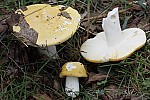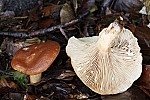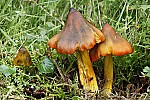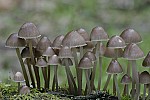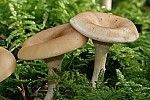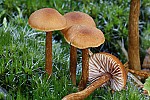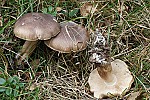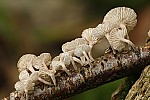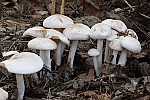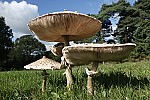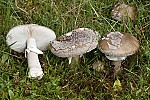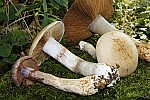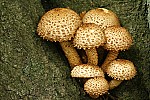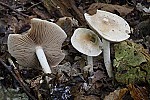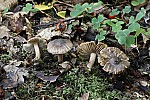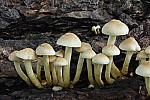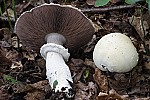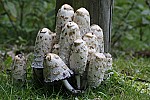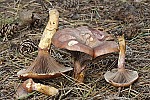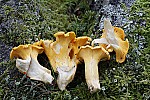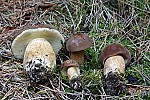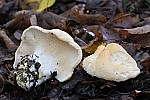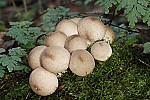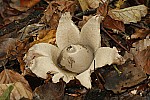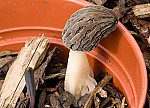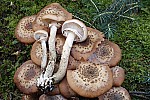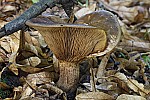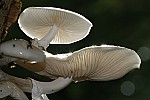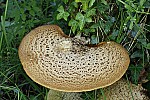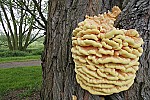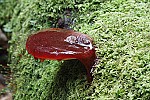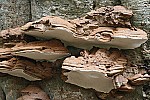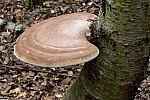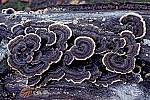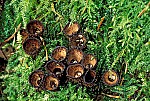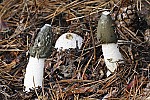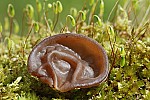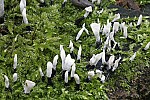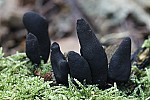There are very many species of fungi, perhaps 8 times as many species of fungi as flowering plants in UK so it is a huge task to learn them all, indeed even the experts struggle. However it is possible to get to know the main groups of fungi that are shown below. These groups cover most of the fungi you will see. One of the fascinating things about fungi is that even after many years of foraging each year still turns up species that youve never seen before.
I would suggest you look at the pictures and very brief descriptions of the different groups of fungi and try to remember some of them. Then go into the woods and see if you can match up any of the fungi to the groups you have been looking at. Bear in mind that not all of the mushrooms you see will fit into one of these groups and dont try too many at once, it is better to learn a few at a time and reinforce the ones that you do know. Slowly gain confidence to be able to say its a Russula or Lactarius and knowing why you think that. You can also try spotting a few of the very common species such as Birch polypore and Dryads saddle that don't fit into the main groups and are shown at the end.
Once you have got he hang of a few common fungi start looking more closely at them and get an idea of the range of characters that are used to help with identification. The colour of cap and stem, whether it has gills or pores (small holes) under the cap, whether it looks like a conventional mushroom with cap and stem or is a bracket growing out of wood or has one of a whole variety of other forms such as being cup shaped. One very useful character is the colour of the spores, you may wonder how to tell this since they are microscopic, however it is possible to see their colour when the spores are heaped together. You may be able to see this when one cap overlaps another and there is a spore deposit on the lower one or you can produce a spore print yourself by placing the cap on a sheet of paper and covering it with a glass and leaving overnight. The groups of fungi are arranged with light coloured spores at the beginning then darker ones at the end.
Some common species not included in the main groups
Other notes Some of the most obvious fungi and ones that can be around all year are the bracket fungi growing on trees and logs. You might think that these should be easy to identify, and some are, but others can be tricky as many species have the same general shape and colour and have very few characters that distinguish one from another without microscopic examination.
Fungal classification It can be useful to know a little about how the fungi are classified and how they are related to each other as this sometimes helps with identification. The fungi we are dealing with in this guide are divided into two main groups Basidiomycetes and Ascomycetes. The Basidiomycetes have spores that drop off special cells called basidia and are wafted away by the wind, this means that the gills or pores need to be held vertical or the spores wont be able to drop down and be dispersed but instead they will just hit the gills and stay there. They include the typical mushroom shaped fungi such as Fly Agaric and the Boletes but also some of the other types such as puffballs and coral fungi. In contrast the other main group the Ascomycetes shoot out their spores from special tiny sacks embedded in the surface of the fungus. The Ascomycetes take on a wide range of shapes usually relating to some form of club or cup, for example Dead Mans fingers or Orange Peel fungus. If you lay the black fruiting body of Dead Mans fingers on a sheet of paper and leave it covered overnight youll see a black mass of spores shot out to the sides of the finger not just dropped down directly below it. Many of the Ascomycetes are rather small and impossible to identify without a microscope but they are very pretty and rewarding to study if you want to take an interest.
